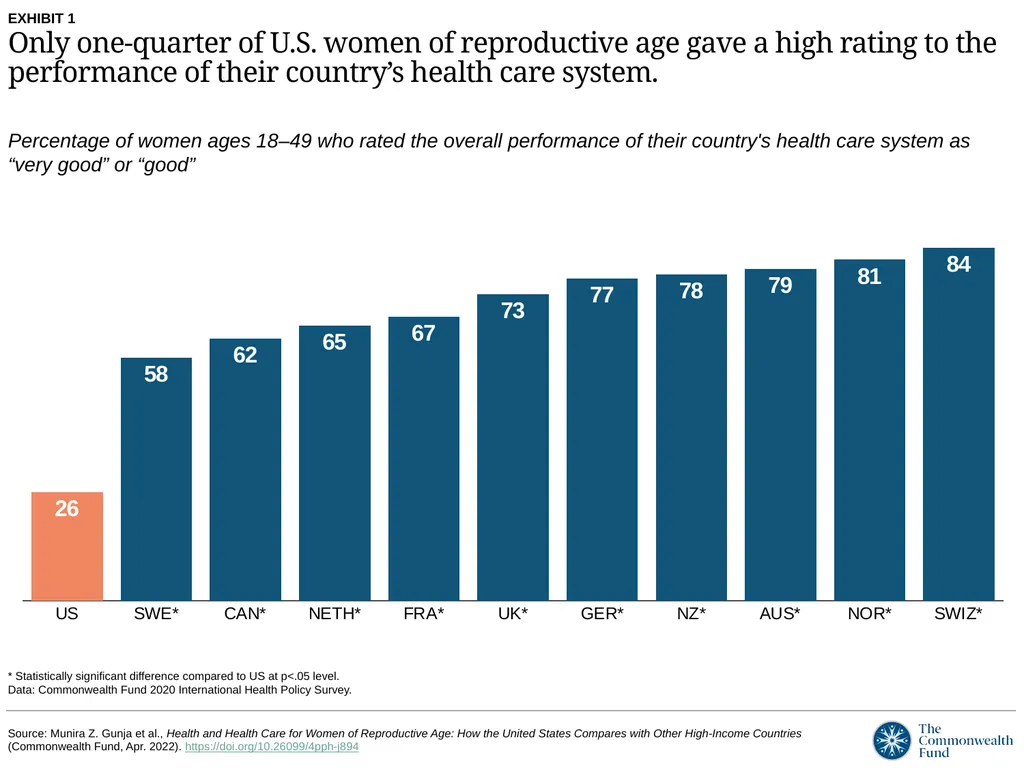Percentage of women ages 18–49 who rated the
Author : luanne-stotts | Published Date : 2025-05-12
Description: Percentage of women ages 1849 who rated the overall performance of their countrys health care system as very good or good Statistically significant difference compared to US at p05 level Data Commonwealth Fund 2020 International
Presentation Embed Code
Download Presentation
Download
Presentation The PPT/PDF document
"Percentage of women ages 18–49 who rated the" is the property of its rightful owner.
Permission is granted to download and print the materials on this website for personal, non-commercial use only,
and to display it on your personal computer provided you do not modify the materials and that you retain all
copyright notices contained in the materials. By downloading content from our website, you accept the terms of
this agreement.
Transcript:Percentage of women ages 18–49 who rated the:
Percentage of women ages 18–49 who rated the overall performance of their country's health care system as “very good” or “good” * Statistically significant difference compared to US at p<.05 level. Data: Commonwealth Fund 2020 International Health Policy Survey. EXHIBIT 1 Only one-quarter of U.S. women of reproductive age gave a high rating to the performance of their country’s health care system. Percentage of women ages 18–49 who reported having a regular doctor or regular place of care * Statistically significant difference compared to US at p<.05 level. Data: Commonwealth Fund 2020 International Health Policy Survey. EXHIBIT 2 It is less common for women of reproductive age in the U.S., Sweden, Canada, and Australia to have a regular doctor or place of care. Percentage of women ages 18–49 with out-of-pocket costs of $2,000 or more† † Percentage of respondents who reported that their annual (past year) family out-of-pocket spending for medical treatments or services that were not covered by public or private insurance was $2,000 or more. * Statistically significant difference compared to US at p<.05 level. Respondents in Sweden were not asked this series of questions. Data: Commonwealth Fund 2020 International Health Policy Survey. EXHIBIT 3 Women of reproductive age in the U.S. and Switzerland spend more out of pocket on health care than women in other high-income countries. Percentage of women ages 18–49 with at least one cost-related access problem Note: Cost-related access problems include any of the following in the past year: 1) had a medical problem but did not visit a doctor; 2) skipped a medical test, treatment, or follow-up recommended by a doctor; or 3) did not fill or collect a prescription for medicine, or skipped doses of medicine, because of the cost in the past 12 months. * Statistically significant difference compared to US at p<.05 level. Data: Commonwealth Fund 2020 International Health Policy Survey. EXHIBIT 4 Women of reproductive age in the U.S. are the most likely to skip or delay needed care because of costs. Percentage of women ages 18–49 with at least one medical bill problem Note: Medical bill problems include any of the following in the past year: 1) had serious problems paying or were unable to pay medical bills; 2) spent a lot of time on paperwork or disputes related to medical bills; or 3) were denied insurance payments or were paid less than expected. * Statistically significant difference














